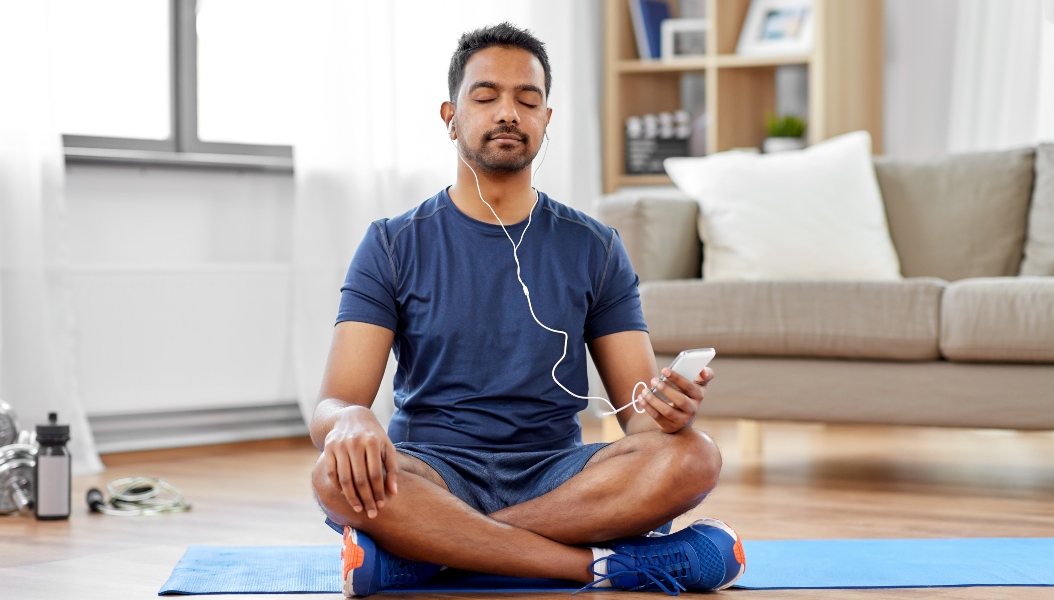What is Mindfulness?
It sounds like such a simple thing, so can being mindful really have an impact? The truth is there is nothing simple about mindfulness. It’s a practice that takes effort at first, but more and more studies show that mindfulness can play a significant role in your physical and mental health.
At TheraLight, we believe that non-pharmacological treatments and therapies offer many benefits. Once you understand how and why mindfulness is effective, you’ll find ways to incorporate it into your life. So, what is mindfulness?
So—what is Mindfulness?
Mindfulness means staying in the moment without judgment. It’s a concept getting a lot of attention these days, but it’s not new. Mindfulness draws from techniques in Buddhism that have been practiced for centuries.
By pulling your thought processes into the moment, you can think more clearly and regain control and balance over what is happening. It doesn’t sound like it should be difficult, but how many times have you said the words, “I wasn’t paying attention.” Mindfulness is about paying attention to things as they happen so that it can be a challenge, but one worth pursuing.
What are the Benefits of Mindfulness?
Science says there are real benefits to this practice, such as:
- Lower blood pressure: Heart disease is the number one killer in this country, and hypertension is a risk factor. A 2013 study found that people with pre-hypertension were able to control their blood pressures using mindfulness techniques. It was more effective than other stress reduction practices at bringing blood pressure down.
- May decrease the rate of cognitive decline: The rising rates of dementia have agencies like the World Health Organization (WHO) scrambling to raise awareness. A 2017 study tested people with healthy brains as they did mindfulness training. They saw activation in the areas of the brain responsible for attention. The tests showed cognitive stimulation from mindfulness could help decrease the rate of memory loss and poor concentration in people as they get older.
- Improved immune systems: Several studies show that mindfulness can improve the immune system’s response to illnesses, including certain cancers, HIV colitis, and inflammation.
The benefits of mindfulness go beyond physical health, though.
What are the Mental Health Benefits of Mindfulness?
There is a large body of research showing that mindfulness practices can help those experiencing psychological pain from conditions like:
- Depression
- Anxiety
- PTSD
- Stress
- Addiction
One of the most significant mental health advantages of mindfulness is what psychologists call reduced rumination. Rumination means focusing all your attention on something that is causing you distress.
When you can’t stop thinking about that thing you did or something someone said that hurt your feelings, it prolongs the psychological pain and makes it hard for you to process any other emotions like happiness. Mindfulness, by definition, brings you into the moment, so you can push the negative feeling aside.
How To Practice Mindfulness
There are many approaches to mindfulness. Ideally, you should start small and build until you are applying mindfulness to many different things throughout the day.
Meditation
Meditation is the first step for many just trying to understand mindfulness.
- Start by sitting in a comfortable position. You can use a chair or sit on the floor. Whatever is the most comfortable for you.
- Now, focus your attention on your body. What are your legs doing? How does your spine feel? What happens when you shift? Does your spine become straighter?
- Next, close your eyes and listen to your breathing. Hear yourself inhale and feel the changes in your body as you do. What happens when you exhale?
- Pay attention to when your mind wanders? When it does, shift your focus back to your breath.
- Incorporate light therapy into your mindfulness training, especially during the cold seasons, when you might not get as much natural light. The right product should include a wide spectrum of light, including red, infrared, and near-infrared. Light therapy is a powerful form of self-care.
Set a time limit, maybe five minutes for the first couple of sessions, then you can build to ten minutes and longer.
Mindful Eating
Once you master mindfulness meditation, you can add the practice to other parts of your life, like eating. Mindful eating can promote weight loss and help control unhealthy eating habits. Tips for mindful eating include:
- Eat at the table with no distractions like the TV or other electronic devices
- Eat slowly, focusing on your five senses. Pay attention to how the food feels in your mouth, what is its texture? How does it smell? What does it sound like when you eat it?
- Make each meal last as long as possible. It takes about 20 minutes for your body to decide you are full.
Mindfulness can help you learn to pay attention to the hunger clues your body provides. Are you really hungry, for example, or are you eating out of habit? Do you want a second helping, or are you full?
Mindfulness is a very personal thing, and no two people experience it the same way. You must find the mindfulness practice that works best for you.







